Travis Desell
Neuroevolution Neural Architecture Search for Evolving RNNs in Stock Return Prediction and Portfolio Trading
Oct 22, 2024Abstract:Stock return forecasting is a major component of numerous finance applications. Predicted stock returns can be incorporated into portfolio trading algorithms to make informed buy or sell decisions which can optimize returns. In such portfolio trading applications, the predictive performance of a time series forecasting model is crucial. In this work, we propose the use of the Evolutionary eXploration of Augmenting Memory Models (EXAMM) algorithm to progressively evolve recurrent neural networks (RNNs) for stock return predictions. RNNs are evolved independently for each stocks and portfolio trading decisions are made based on the predicted stock returns. The portfolio used for testing consists of the 30 companies in the Dow-Jones Index (DJI) with each stock have the same weight. Results show that using these evolved RNNs and a simple daily long-short strategy can generate higher returns than both the DJI index and the S&P 500 Index for both 2022 (bear market) and 2023 (bull market).
Neuro-mimetic Task-free Unsupervised Online Learning with Continual Self-Organizing Maps
Feb 19, 2024Abstract:An intelligent system capable of continual learning is one that can process and extract knowledge from potentially infinitely long streams of pattern vectors. The major challenge that makes crafting such a system difficult is known as catastrophic forgetting - an agent, such as one based on artificial neural networks (ANNs), struggles to retain previously acquired knowledge when learning from new samples. Furthermore, ensuring that knowledge is preserved for previous tasks becomes more challenging when input is not supplemented with task boundary information. Although forgetting in the context of ANNs has been studied extensively, there still exists far less work investigating it in terms of unsupervised architectures such as the venerable self-organizing map (SOM), a neural model often used in clustering and dimensionality reduction. While the internal mechanisms of SOMs could, in principle, yield sparse representations that improve memory retention, we observe that, when a fixed-size SOM processes continuous data streams, it experiences concept drift. In light of this, we propose a generalization of the SOM, the continual SOM (CSOM), which is capable of online unsupervised learning under a low memory budget. Our results, on benchmarks including MNIST, Kuzushiji-MNIST, and Fashion-MNIST, show almost a two times increase in accuracy, and CIFAR-10 demonstrates a state-of-the-art result when tested on (online) unsupervised class incremental learning setting.
Minimally Supervised Topological Projections of Self-Organizing Maps for Phase of Flight Identification
Feb 17, 2024Abstract:Identifying phases of flight is important in the field of general aviation, as knowing which phase of flight data is collected from aircraft flight data recorders can aid in the more effective detection of safety or hazardous events. General aviation flight data for phase of flight identification is usually per-second data, comes on a large scale, and is class imbalanced. It is expensive to manually label the data and training classification models usually faces class imbalance problems. This work investigates the use of a novel method for minimally supervised self-organizing maps (MS-SOMs) which utilize nearest neighbor majority votes in the SOM U-matrix for class estimation. Results show that the proposed method can reach or exceed a naive SOM approach which utilized a full data file of labeled data, with only 30 labeled datapoints per class. Additionally, the minimally supervised SOM is significantly more robust to the class imbalance of the phase of flight data. These results highlight how little data is required for effective phase of flight identification.
Minimally Supervised Learning using Topological Projections in Self-Organizing Maps
Jan 12, 2024



Abstract:Parameter prediction is essential for many applications, facilitating insightful interpretation and decision-making. However, in many real life domains, such as power systems, medicine, and engineering, it can be very expensive to acquire ground truth labels for certain datasets as they may require extensive and expensive laboratory testing. In this work, we introduce a semi-supervised learning approach based on topological projections in self-organizing maps (SOMs), which significantly reduces the required number of labeled data points to perform parameter prediction, effectively exploiting information contained in large unlabeled datasets. Our proposed method first trains SOMs on unlabeled data and then a minimal number of available labeled data points are ultimately assigned to key best matching units (BMU). The values estimated for newly-encountered data points are computed utilizing the average of the $n$ closest labeled data points in the SOM's U-matrix in tandem with a topological shortest path distance calculation scheme. Our results indicate that the proposed semi-supervised model significantly outperforms traditional regression techniques, including linear and polynomial regression, Gaussian process regression, K-nearest neighbors, as well as various deep neural network models.
Backpropagation-Free 4D Continuous Ant-Based Neural Topology Search
May 11, 2023



Abstract:Continuous Ant-based Topology Search (CANTS) is a previously introduced novel nature-inspired neural architecture search (NAS) algorithm that is based on ant colony optimization (ACO). CANTS utilizes a continuous search space to indirectly-encode a neural architecture search space. Synthetic ant agents explore CANTS' continuous search space based on the density and distribution of pheromones, strongly inspired by how ants move in the real world. This continuous search space allows CANTS to automate the design of artificial neural networks (ANNs) of any size, removing a key limitation inherent to many current NAS algorithms that must operate within structures of a size that is predetermined by the user. This work expands CANTS by adding a fourth dimension to its search space representing potential neural synaptic weights. Adding this extra dimension allows CANTS agents to optimize both the architecture as well as the weights of an ANN without applying backpropagation (BP), which leads to a significant reduction in the time consumed in the optimization process. The experiments of this study - using real-world data - demonstrate that the BP-Free~CANTS algorithm exhibits highly competitive performance compared to both CANTS and ANTS while requiring significantly less operation time.
Predicted Embedding Power Regression for Large-Scale Out-of-Distribution Detection
Mar 14, 2023



Abstract:Out-of-distribution (OOD) inputs can compromise the performance and safety of real world machine learning systems. While many methods exist for OOD detection and work well on small scale datasets with lower resolution and few classes, few methods have been developed for large-scale OOD detection. Existing large-scale methods generally depend on maximum classification probability, such as the state-of-the-art grouped softmax method. In this work, we develop a novel approach that calculates the probability of the predicted class label based on label distributions learned during the training process. Our method performs better than current state-of-the-art methods with only a negligible increase in compute cost. We evaluate our method against contemporary methods across $14$ datasets and achieve a statistically significant improvement with respect to AUROC (84.2 vs 82.4) and AUPR (96.2 vs 93.7).
Online Evolutionary Neural Architecture Search for Multivariate Non-Stationary Time Series Forecasting
Feb 20, 2023Abstract:Time series forecasting (TSF) is one of the most important tasks in data science given the fact that accurate time series (TS) predictive models play a major role across a wide variety of domains including finance, transportation, health care, and power systems. Real-world utilization of machine learning (ML) typically involves (pre-)training models on collected, historical data and then applying them to unseen data points. However, in real-world applications, time series data streams are usually non-stationary and trained ML models usually, over time, face the problem of data or concept drift. To address this issue, models must be periodically retrained or redesigned, which takes significant human and computational resources. Additionally, historical data may not even exist to re-train or re-design model with. As a result, it is highly desirable that models are designed and trained in an online fashion. This work presents the Online NeuroEvolution-based Neural Architecture Search (ONE-NAS) algorithm, which is a novel neural architecture search method capable of automatically designing and dynamically training recurrent neural networks (RNNs) for online forecasting tasks. Without any pre-training, ONE-NAS utilizes populations of RNNs that are continuously updated with new network structures and weights in response to new multivariate input data. ONE-NAS is tested on real-world, large-scale multivariate wind turbine data as well as the univariate Dow Jones Industrial Average (DJIA) dataset. Results demonstrate that ONE-NAS outperforms traditional statistical time series forecasting methods, including online linear regression, fixed long short-term memory (LSTM) and gated recurrent unit (GRU) models trained online, as well as state-of-the-art, online ARIMA strategies.
A Large-Scale Annotated Multivariate Time Series Aviation Maintenance Dataset from the NGAFID
Oct 13, 2022



Abstract:This paper presents the largest publicly available, non-simulated, fleet-wide aircraft flight recording and maintenance log data for use in predicting part failure and maintenance need. We present 31,177 hours of flight data across 28,935 flights, which occur relative to 2,111 unplanned maintenance events clustered into 36 types of maintenance issues. Flights are annotated as before or after maintenance, with some flights occurring on the day of maintenance. Collecting data to evaluate predictive maintenance systems is challenging because it is difficult, dangerous, and unethical to generate data from compromised aircraft. To overcome this, we use the National General Aviation Flight Information Database (NGAFID), which contains flights recorded during regular operation of aircraft, and maintenance logs to construct a part failure dataset. We use a novel framing of Remaining Useful Life (RUL) prediction and consider the probability that the RUL of a part is greater than 2 days. Unlike previous datasets generated with simulations or in laboratory settings, the NGAFID Aviation Maintenance Dataset contains real flight records and maintenance logs from different seasons, weather conditions, pilots, and flight patterns. Additionally, we provide Python code to easily download the dataset and a Colab environment to reproduce our benchmarks on three different models. Our dataset presents a difficult challenge for machine learning researchers and a valuable opportunity to test and develop prognostic health management methods
Addressing Tactic Volatility in Self-Adaptive Systems Using Evolved Recurrent Neural Networks and Uncertainty Reduction Tactics
Apr 21, 2022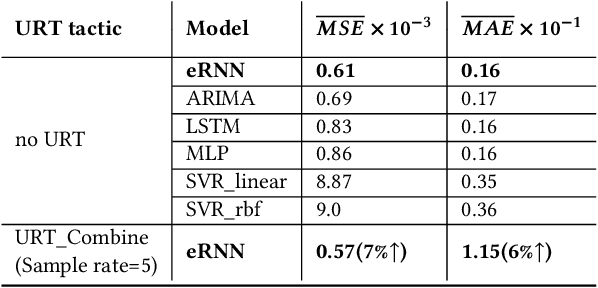
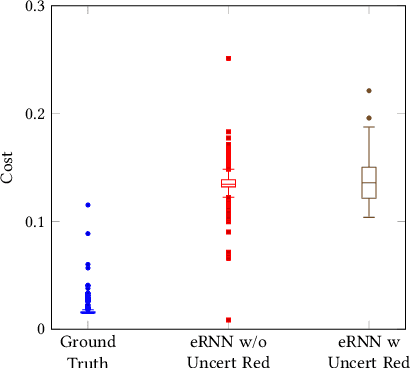
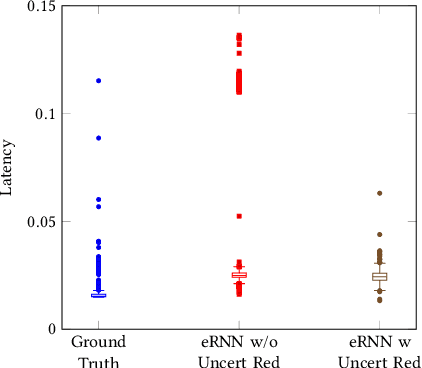
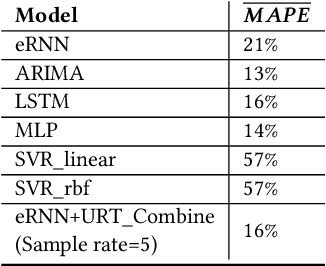
Abstract:Self-adaptive systems frequently use tactics to perform adaptations. Tactic examples include the implementation of additional security measures when an intrusion is detected, or activating a cooling mechanism when temperature thresholds are surpassed. Tactic volatility occurs in real-world systems and is defined as variable behavior in the attributes of a tactic, such as its latency or cost. A system's inability to effectively account for tactic volatility adversely impacts its efficiency and resiliency against the dynamics of real-world environments. To enable systems' efficiency against tactic volatility, we propose a Tactic Volatility Aware (TVA-E) process utilizing evolved Recurrent Neural Networks (eRNN) to provide accurate tactic predictions. TVA-E is also the first known process to take advantage of uncertainty reduction tactics to provide additional information to the decision-making process and reduce uncertainty. TVA-E easily integrates into popular adaptation processes enabling it to immediately benefit a large number of existing self-adaptive systems. Simulations using 52,106 tactic records demonstrate that: I) eRNN is an effective prediction mechanism, II) TVA-E represents an improvement over existing state-of-the-art processes in accounting for tactic volatility, and III) Uncertainty reduction tactics are beneficial in accounting for tactic volatility. The developed dataset and tool can be found at https://tacticvolatility.github.io/
ONE-NAS: An Online NeuroEvolution based Neural Architecture Search for Time Series Forecasting
Feb 27, 2022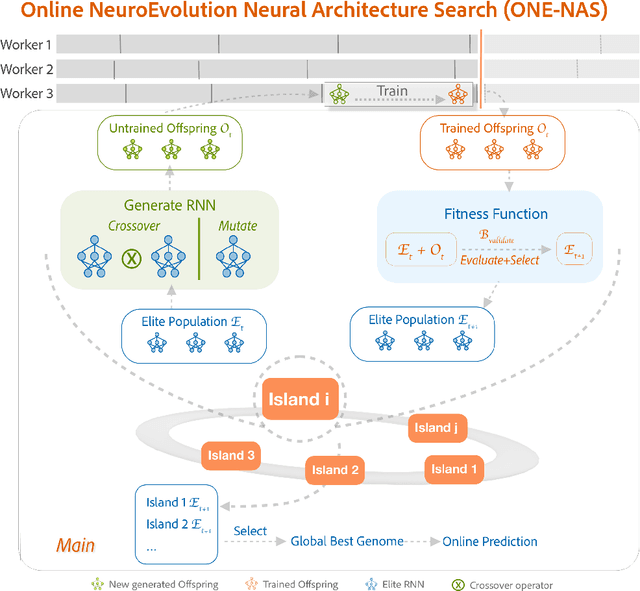
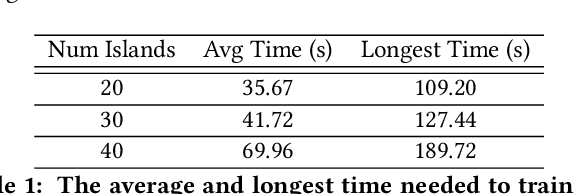

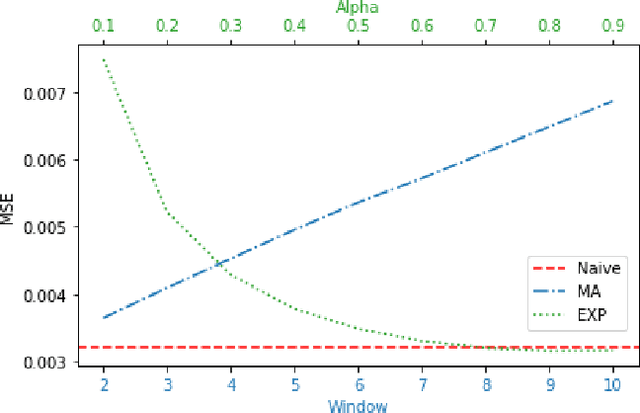
Abstract:Time series forecasting (TSF) is one of the most important tasks in data science, as accurate time series (TS) predictions can drive and advance a wide variety of domains including finance, transportation, health care, and power systems. However, real-world utilization of machine learning (ML) models for TSF suffers due to pretrained models being able to learn and adapt to unpredictable patterns as previously unseen data arrives over longer time scales. To address this, models must be periodically retained or redesigned, which takes significant human and computational resources. This work presents the Online NeuroEvolution based Neural Architecture Search (ONE-NAS) algorithm, which to the authors' knowledge is the first neural architecture search algorithm capable of automatically designing and training new recurrent neural networks (RNNs) in an online setting. Without any pretraining, ONE-NAS utilizes populations of RNNs which are continuously updated with new network structures and weights in response to new multivariate input data. ONE-NAS is tested on real-world large-scale multivariate wind turbine data as well a univariate Dow Jones Industrial Average (DJIA) dataset, and is shown to outperform traditional statistical time series forecasting, including naive, moving average, and exponential smoothing methods, as well as state of the art online ARIMA strategies.
 Add to Chrome
Add to Chrome Add to Firefox
Add to Firefox Add to Edge
Add to Edge